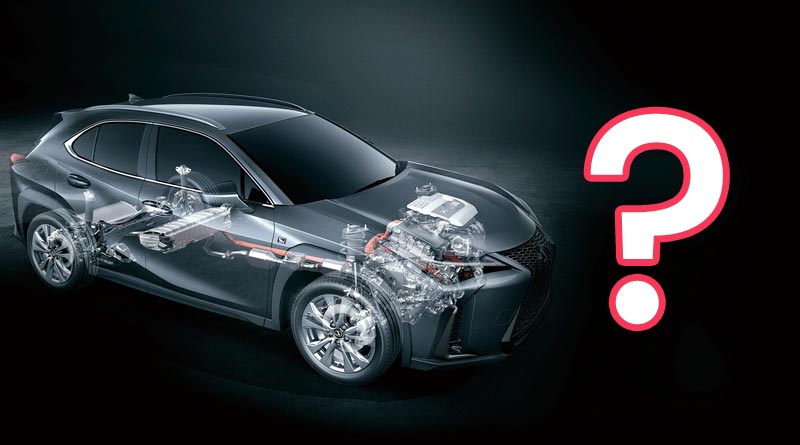Hybrid engines are the champions of fuel efficiency, marrying the familiar power of gasoline with the clean potential of electricity. Unlike traditional engines, hybrids don’t rely solely on burning fuel. Instead, they orchestrate a dynamic duo between a gasoline engine and an electric motor. This tag-team approach delivers impressive results: the gasoline engine propels the car while simultaneously charging the electric battery. The electric motor then takes over during low-speed driving or lends a burst of power when needed. This eco-conscious collaboration translates to significant savings at the pump, reduced emissions, and a smoother, more efficient driving experience. Hybrids represent a pivotal leap forward, solidifying their place as a key player in the ever-evolving world of automotive innovation.
What is a hybrid?

In simple terms, a hybrid vehicle combines an electric motor with a gasoline engine to propel the car. The system captures energy through regenerative braking, where the electric motor or gas engine, or both, may be in action. This synergy reduces gasoline consumption, leading to improved fuel efficiency. Additionally, the integration of electric power can enhance performance in specific scenarios.
In an interview, Dr. Emily White from GreenDrive Innovations stated that, “The electric motor draws power from a high-voltage battery pack, distinct from the standard 12-volt battery. This battery is replenished by harnessing energy during deceleration, a process often lost as heat in traditional brakes. Hybrids utilize the gas engine for both charging the battery and maintaining its charge. Car manufacturers employ various hybrid designs tailored to achieve diverse goals, ranging from maximizing fuel savings to keeping the vehicle cost-effective.”
Key Components of a Hybrid Electric Car
- Powertrain Components: The powertrain includes both the internal combustion engine and the electric motor. In a hybrid, these components work together to provide propulsion, offering flexibility in using either or both power sources.
- Battery Pack: Hybrid electric cars feature a high-voltage battery pack, distinct from the standard 12-volt battery. This battery stores and supplies electrical energy to the electric motor, and it’s often recharged through regenerative braking or by the internal combustion engine.
- Electric Motor: The electric motor contributes to the vehicle’s propulsion, either working independently or in tandem with the internal combustion engine. It is powered by the high-voltage battery and assists during acceleration and low-speed driving.
- Internal Combustion Engine: The traditional gasoline engine is a fundamental component of a hybrid, providing additional power and charging the battery when needed. It operates efficiently alongside the electric motor for optimal fuel efficiency.
- Regenerative Braking System: This system captures kinetic energy during braking, converting it into electrical energy to recharge the battery. It enhances overall energy efficiency by harnessing energy that would otherwise be lost as heat in traditional braking systems.
- Transmission: Hybrid vehicles may use a specialized transmission that allows smooth integration between the internal combustion engine and the electric motor. Continuously Variable Transmissions (CVTs) are commonly employed for seamless power transitions.
- Control System and Electronic Control Unit (ECU): The control system manages the coordination between the internal combustion engine and the electric motor. The Electronic Control Unit (ECU) plays a crucial role in optimizing the balance between fuel efficiency and performance.
- Charging System (in Plug-in Hybrids): In plug-in hybrid electric cars, there’s an external charging system to recharge the high-voltage battery. This system enables users to charge their vehicles through electric outlets, extending the electric-only driving range.
- Power Electronics: Power electronics manage the flow of electrical energy between the battery, electric motor, and internal combustion engine. This component ensures efficient energy conversion and distribution throughout the vehicle.
Type of Hybrid Vehicles
- Full Hybrid (HEV): Full hybrids are capable of operating solely on electric power, gasoline power, or a combination of both. They employ regenerative braking to recharge the battery and can switch between the electric motor and the internal combustion engine seamlessly.
- Mild Hybrid (MHEV): Mild hybrids have a smaller electric motor that assists the gasoline engine, providing additional power during acceleration. However, they cannot operate solely on electric power and primarily focus on enhancing fuel efficiency.
- Plug-in Hybrid (PHEV): Plug-in hybrids feature a larger battery pack that can be charged externally, usually through an electric outlet. This allows them to operate on electric power for a significant distance before the internal combustion engine takes over.
- Series Hybrid: In series hybrids, the internal combustion engine serves solely as a generator to recharge the battery, while the electric motor drives the wheels. The gas engine does not directly power the vehicle, making it more fuel-efficient.
- Parallel Hybrid: Parallel hybrids use both the internal combustion engine and the electric motor to provide power to the wheels. They can operate on either power source independently or combine both for maximum performance.
- Range Extender (REx) Hybrid: Range extender hybrids operate similarly to electric cars but include a small gasoline engine that acts as a generator to recharge the battery when its capacity is low, extending the overall range of the vehicle.
How Hybrid Engine Works?

- Dual Power Sources: Hybrid engines operate on the principle of having two power sources — an internal combustion engine (typically gasoline) and an electric motor. This dual setup allows for flexibility and efficiency in different driving conditions.
- Power Distribution: The control system of the hybrid manages the distribution of power between the internal combustion engine and the electric motor. Depending on driving demands, one or both of these power sources can be engaged.
- Regenerative Braking: A key feature is regenerative braking. When the vehicle decelerates or brakes, the electric motor acts as a generator, converting kinetic energy into electrical energy. This energy is then directed back to the battery for storage and later use.
- Electric-Only Mode: Hybrids can operate in electric-only mode, drawing power from the high-voltage battery. This mode is often employed during low-speed driving or in situations where less power is required, reducing reliance on the internal combustion engine.
- Parallel and Series Modes: In parallel mode, both the internal combustion engine and the electric motor work together to propel the vehicle, providing extra power when needed. In series mode, the internal combustion engine serves solely as a generator, charging the battery, while the electric motor drives the wheels.
- Battery Charging: The high-voltage battery pack is charged through multiple mechanisms. Apart from regenerative braking, the internal combustion engine can act as a generator, converting excess energy to charge the battery. This ensures the battery remains charged for electric motor support.
- Efficient Transitions: Hybrids often utilize advanced transmission systems, such as Continuously Variable Transmissions (CVTs), to ensure smooth transitions between the electric motor and the internal combustion engine. This seamless switch optimizes overall efficiency.
- Performance Boost: The electric motor in hybrid vehicles can provide an additional power boost during acceleration, enhancing overall performance. This feature contributes to improved fuel efficiency and responsiveness.
Hybrid engines ingeniously blend traditional internal combustion with electric power, optimizing fuel efficiency and reducing emissions. Their adaptive design, incorporating regenerative braking and seamless power transitions, marks a significant stride towards a sustainable and efficient future in transportation. For more such posts please visit our Technology section.



